The Romantic Manifesto: A Philosophy of Literature Read online
The Romantic Manifesto: A Philosophy of Literature
Ayn Rand
In this searching and courageous work, Ayn Rand cuts through the haze of sentimentality and vague thinking that surrounds the subject of art. For the first time a precise definition is given to art, and a careful analysis made of its nature. With the uncompromising honesty Ayn Rand’s millions of readers have come to expect, the author presents a devastating case against both naturalistic and abstract art—and explains the force that drives her to write, and the goals she strives to attain. The Romantic Manifesto takes its place as a keystone book in the towering intellectual edifice raised by one of the most remarkable writers and thinkers of our age.
Ayn Rand
THE ROMANTIC MANIFESTO
A Philosophy of Literature
Revised Edition
“THIS MANIFESTO IS NOT ISSUED IN THE NAME OF AN ORGANIZATION OR A MOVEMENT. I SPEAK ONLY FOR MYSELF. THERE IS NO ROMANTIC MOVEMENT TODAY. IF THERE IS TO BE ONE IN THE ART OF THE FUTURE, THIS BOOK WILL HAVE HELPED IT TO COME INTO BEING.”
Introduction
THE dictionary definition of “manifesto” is: “a public declaration of intentions, opinions, objectives or motives, as one issued by a government, sovereign, or organization.” (The Random House Dictionary of the English Language, College Edition, 1968.)
I must state, therefore, that this manifesto is not issued in the name of an organization or a movement. I speak only for myself. There is no Romantic movement today. If there is to be one in the art of the future, this book will have helped it to come into being.
According to my philosophy, one must not express “intentions, opinions, objectives or motives” without stating one’s reasons for them—i.e., without identifying their basis in reality. Therefore, the actual manifesto—the declaration of my personal objectives or motives—is at the end of this book, after the presentation of the theoretical grounds that entitle me to these particular objectives and motives. The declaration is in Chapter 11, “The Goal of My Writing,” and, partly, in Chapter 10, “Introduction to Ninety-Three.”
Those who feel that art is outside the province of reason would be well advised to leave this book alone: it is not for them. Those who know that nothing is outside the province of reason will find in this book the base of a rational esthetics. It is the absence of such a base that has made today’s obscenely grotesque degradation of art possible.
To quote from Chapter 6: “The destruction of Romanticism in esthetics—like the destruction of individualism in ethics or of capitalism in politics—was made possible by philosophical default… . In all three cases, the nature of the fundamental values involved had never been defined explicitly, the issues were fought in terms of non-essentials, and the values were destroyed by men who did not know what they were losing or why.”
In regard to Romanticism, I have often thought that I am a bridge from the unidentified past to the future. As a child, I saw a glimpse of the pre-World War I world, the last afterglow of the most radiant cultural atmosphere in human history (achieved not by Russian, but by Western culture). So powerful a fire does not die at once: even under the Soviet regime, in my college years, such works as Hugo’s Ruy Blas and Schiller’s Don Carlos were included in theatrical repertories, not as historical revivals, but as part of the contemporary esthetic scene. Such was the level of the public’s intellectual concerns and standards. If one has glimpsed that kind of art—and wider: the possibility of that kind of culture—one is unable to be satisfied with anything less.
I must emphasize that I am not speaking of concretes, nor of politics, nor of journalistic trivia, but of that period’s “sense of life.” Its art projected an overwhelming sense of intellectual freedom, of depth, i.e., concern with fundamental problems, of demanding standards, of inexhaustible originality, of unlimited possibilities and, above all, of profound respect for man. The existential atmosphere (which was then being destroyed by Europe’s philosophical trends and political systems) still held a benevolence that would be incredible to the men of today, i.e., a smiling, confident good will of man to man, and of man to life.
It has been said and written by many commentators that the atmosphere of the Western world before World War I is incommunicable to those who have not lived in that period. I used to wonder how men could say it, know it, yet give it up—until I observed more closely the men of my own and the preceding generations. They had given it up and, along with it, they had given up everything that makes life worth living: conviction, purpose, values, future. They were drained, embittered hulks whimpering occasionally about the hopelessness of life.
Whatever spiritual treason they had committed, they could not accept the cultural sewer of the present, they could not forget that they had once seen a higher, nobler possibility. Unable or unwilling to grasp what had destroyed it, they kept cursing the world, or kept calling men to return to meaningless dogmas, such as religion and tradition, or kept silent. Unable to stifle their vision or to fight for it, they took the “easy” way out: they renounced valuing. To fight, in this context, means: to think. Today, I wonder at how stubbornly men cling to their vices and how easily they give up whatever they regard as the good.
Renunciation is not one of my premises. If I see that the good is possible to men, yet it vanishes, I do not take “Such is the trend of the world” as a sufficient explanation. I ask such questions as: Why?—What caused it?—What or who determines the trends of the world? (The answer is: philosophy.)
The course of mankind’s progress is not a straight, automatic line, but a tortuous struggle, with long detours or relapses into the stagnant night of the irrational. Mankind moves forward by the grace of those human bridges who are able to grasp and transmit, across years or centuries, the achievements men had reached—and to carry them further. Thomas Aquinas is one illustrious example: he was the bridge between Aristotle and the Renaissance, spanning the infamous detour of the Dark and Middle Ages.
Speaking only of the pattern, with no presumptuous comparison of stature intended, I am a bridge of that kind—between the esthetic achievements of the nineteenth century and the minds that choose to discover them, wherever and whenever such minds might exist.
It is impossible for the young people of today to grasp the reality of man’s higher potential and what scale of achievement it had reached in a rational (or semi-rational) culture. But I have seen it. I know that it was real, that it existed, that it is possible. It is that knowledge that I want to hold up to the sight of men—over the brief span of less than a century—before the barbarian curtain descends altogether (if it does) and the last memory of man’s greatness vanishes in another Dark Ages.
I made it my task to learn what made Romanticism, the greatest achievement in art history, possible and what destroyed it. I learned—as in other, similar cases involving philosophy—that Romanticism was defeated by its own spokesmen, that even in its own time it had never been properly recognized or identified. It is Romanticism’s identity that I want to transmit to the future.
As for the present, I am not willing to surrender the world to the jerky contortions of self-inducedly brainless bodies with empty eye sockets, who perform, in stinking basements, the immemorial rituals of staving off terror, which are a dime a dozen in any jungle—and to the quavering witch doctors who call it “art.”
Our day has no art and no future. The future, in the context of progress, is a door open only to those who do not renounce their conceptual faculty; it is not open to mystics, hippies, drug addicts, tribal ritualists—or to anyone who reduces himself to a subanimal, subperceptual, sensory level of awareness.
Will we see an esthetic Renaissance in our time? I do not know. What I do know is this: anyone who fights for the future, lives in it today.
All the essays in this book, with one exception, appeared originally in my magazine The Objectivist (formerly The Objectivist Newsletter). The date at the end of each essay indicates the specific issue. The exception is “Introduction to Ninety-Three,” which is a condensed version of the introduction I wrote for a new edition of Ninety-Three by Victor Hugo, translated by Lowell Bair, published by Bantam Books, Inc., in 1962.
The Objectivist is a magazine that deals with the application of my philosophy to the problems and issues of today’s culture. For further information, those interested may write to OBJECTIVISM, PO Box 51808, Irvine, California 92619.
AYN RAND
New York City
June 1969
1. The Psycho-Epistemology of Art
THE position of art in the scale of human knowledge is, perhaps, the most eloquent symptom of the gulf between man’s progress in the physical sciences and his stagnation (or, today, his retrogression) in the humanities.
The physical sciences are still ruled by some remnants of a rational epistemology (which is rapidly being destroyed), but the humanities have been virtually abandoned to the primitive epistemology of mysticism. While physics has reached the level where men are able to study subatomic particles and interplanetary space, a phenomenon such as art has remained a dark mystery, with little or nothing known about its nature, its function in human life or the cause of its tremendous psychological power. Yet art is of passionately intense importance and profoundly personal concern to most men—and it has existed in every known civilization, accompanying man’s steps from the early hours of his prehistorical dawn, earlier than the birth of written language.
While, in other fields of knowledge, men have outgrown the practice of seeking the guidance of mystic oracles whose qualification for the job was unintelligibility, in the field of esthetics this practice has remained in full force and is becoming more crudely obvious today. Just as savages took the phenomena of nature for granted, as an irreducible primary not to be questioned or analyzed, as the exclusive domain of unknowable demons—so today’s epistemological savages take art for granted, as an irreducible primary not to be questioned or analyzed, as the exclusive domain of a special kind of unknowable demons: their emotions. The only difference is that the prehistorical savages’ error was innocent.
One of the grimmest monuments to altruism is man’s culturally induced selflessness: his willingness to live with himself as with the unknown, to ignore, evade, repress the personal (the non-social) needs of his soul, to know least about the things that matter most, and thus to consign his deepest values to the impotent underground of subjectivity and his life to the dreary wasteland of chronic guilt.
The cognitive neglect of art has persisted precisely because the function of art is non-social. (This is one more instance of altruism’s inhumanity, of its brutal indifference to the deepest needs of man—of an actual, individual man. It is an instance of the inhumanity of any moral theory that regards moral values as a purely social matter.) Art belongs to a non-socializable aspect of reality, which is universal (i.e., applicable to all men) but non-collective: to the nature of man’s consciousness.
One of the distinguishing characteristics of a work of art (including literature) is that it serves no practical, material end, but is an end in itself; it serves no purpose other than contemplation—and the pleasure of that contemplation is so intense, so deeply personal that a man experiences it as a self-sufficient, self-justifying primary and, often, resists or resents any suggestion to analyze it: the suggestion, to him, has the quality of an attack on his identity, on his deepest, essential self.
No human emotion can be causeless, nor can so intense an emotion be causeless, irreducible and unrelated to the source of emotions (and of values): to the needs of a living entity’s survival. Art does have a purpose and does serve a human need; only it is not a material need, but a need of man’s consciousness. Art is inextricably tied to man’s survival—not to his physical survival, but to that on which his physical survival depends: to the preservation and survival of his consciousness.
The source of art lies in the fact that man’s cognitive faculty is conceptual—i.e., that man acquires knowledge and guides his actions, not by means of single, isolated percepts, but by means of abstractions.
To understand the nature and function of art, one must understand the nature and function of concepts.
A concept is a mental integration of two or more units which are isolated by a process of abstraction and united by a specific definition. By organizing his perceptual material into concepts, and his concepts into wider and still wider concepts, man is able to grasp and retain, to identify and integrate an unlimited amount of knowledge, a knowledge extending beyond the immediate concretes of any given, immediate moment.
In any given moment, concepts enable man to hold in the focus of his conscious awareness much more than his purely perceptual capacity would permit. The range of man’s perceptual awareness—the number of percepts he can deal with at any one time—is limited. He may be able to visualize four or five units—as, for instance, five trees. He cannot visualize a hundred trees or a distance of ten light-years. It is only his conceptual faculty that makes it possible for him to deal with knowledge of that kind.
Man retains his concepts by means of language. With the exception of proper names, every word we use is a concept that stands for an unlimited number of concretes of a certain kind. A concept is like a mathematical series of specifically defined units, going off in both directions, open at both ends and including all units of that particular kind. For instance, the concept “man” includes all men who live at present, who have ever lived or will ever live—a number of men so great that one would not be able to perceive them all visually, let alone to study them or discover anything about them.
Language is a code of visual-auditory symbols that serves the psycho-epistemological function of converting abstractions into concretes or, more precisely, into the psycho-epistemological equivalent of concretes, into a manageable number of specific units.
(Psycho-epistemology is the study of man’s cognitive processes from the aspect of the interaction between the conscious mind and the automatic functions of the subconscious.)
Consider the enormous conceptual integration involved in any statement, from the conversation of a child to the discourse of a scientist. Consider the long conceptual chain that starts from simple, ostensive definitions and rises to higher and still higher concepts, forming a hierarchical structure of knowledge so complex that no electronic computer could approach it. It is by means of such chains that man has to acquire and retain his knowledge of reality.
Yet this is the simpler part of his psycho-epistemological task. There is another part which is still more complex.
The other part consists of applying his knowledge—i.e., evaluating the facts of reality, choosing his goals and guiding his actions accordingly. To do that, man needs another chain of concepts, derived from and dependent on the first, yet separate and, in a sense, more complex: a chain of normative abstractions.
While cognitive abstractions identify the facts of reality, normative abstractions evaluate the facts, thus prescribing a choice of values and a course of action. Cognitive abstractions deal with that which is; normative abstractions deal with that which ought to be (in the realms open to man’s choice).
Ethics, the normative science, is based on two cognitive branches of philosophy: metaphysics and epistemology. To prescribe what man ought to do, one must first know what he is and where he is—i.e., what is his nature (including his means of cognition) and the nature of the universe in which he acts. (It is irrelevant, in this context, whether the metaphysical base of a given system of ethics is true or false; if it is false, the error will make the ethics impracticable. What concerns us here is only the dep
endence of ethics on metaphysics.)
Is the universe intelligible to man, or unintelligible and unknowable? Can man find happiness on earth, or is he doomed to frustration and despair? Does man have the power of choice, the power to choose his goals and to achieve them, the power to direct the course of his life—or is he the helpless plaything of forces beyond his control, which determine his fate? Is man, by nature, to be valued as good, or to be despised as evil? These are metaphysical questions, but the answers to them determine the kind of ethics men will accept and practice; the answers are the link between metaphysics and ethics. And although metaphysics as such is not a normative science, the answers to this category of questions assume, in man’s mind, the function of metaphysical value-judgments, since they form the foundation of all of his moral values.
Consciously or subconsciously, explicitly or implicitly, man knows that he needs a comprehensive view of existence to integrate his values, to choose his goals, to plan his future, to maintain the unity and coherence of his life—and that his metaphysical value-judgments are involved in every moment of his life, in his every choice, decision and action.
Metaphysics—the science that deals with the fundamental nature of reality—involves man’s widest abstractions. It includes every concrete he has ever perceived, it involves such a vast sum of knowledge and such a long chain of concepts that no man could hold it all in the focus of his immediate conscious awareness. Yet he needs that sum and that awareness to guide him—he needs the power to summon them into full, conscious focus.
That power is given to him by art.
Art is a selective re-creation of reality according to an artist’s metaphysical value-judgments.
By a selective re-creation, art isolates and integrates those aspects of reality which represent man’s fundamental view of himself and of existence. Out of the countless number of concretes—of single, disorganized and (seemingly) contradictory attributes, actions and entities—an artist isolates the things which he regards as metaphysically essential and integrates them into a single new concrete that represents an embodied abstraction.

 Anthem
Anthem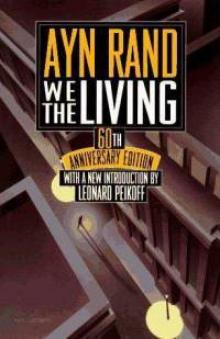 We the Living
We the Living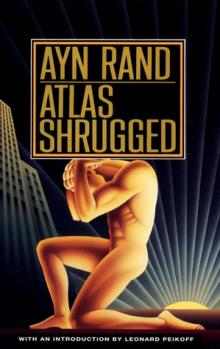 Atlas Shrugged
Atlas Shrugged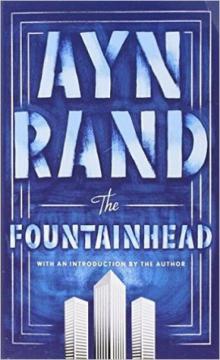 The Fountainhead
The Fountainhead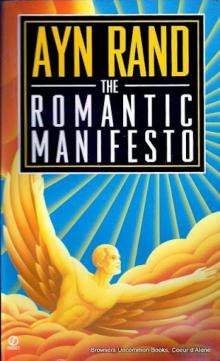 The Romantic Manifesto: A Philosophy of Literature
The Romantic Manifesto: A Philosophy of Literature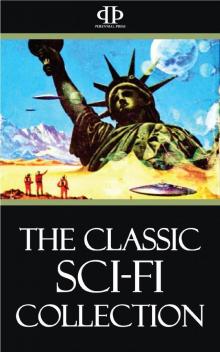 The Classic Sci-Fi Collection
The Classic Sci-Fi Collection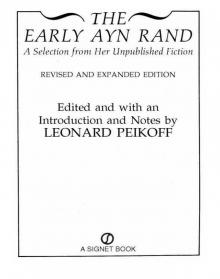 The Early Ayn Rand
The Early Ayn Rand